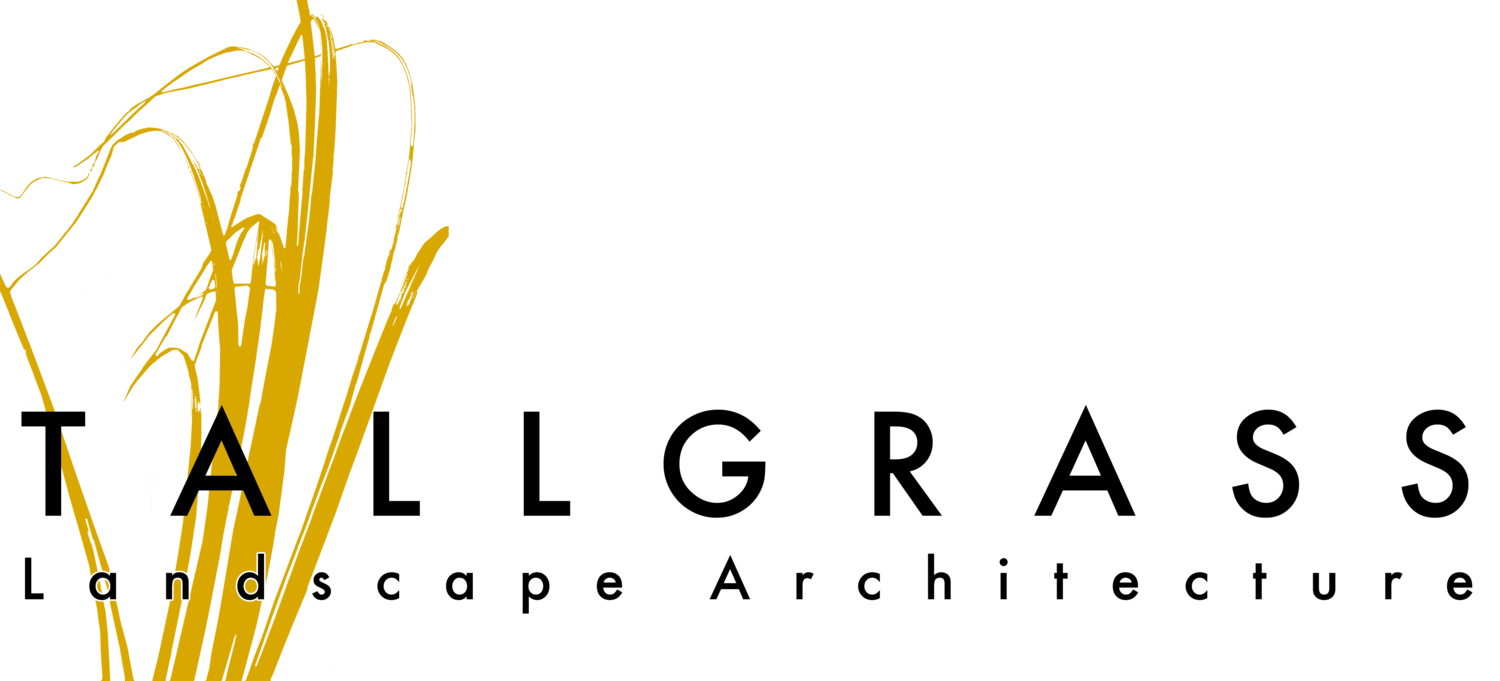Growing Knowledge: The Keepers of the Earth Project at Enemy Swim Day School
A couple of years ago, we were contacted by Dr. Nadine Eastman to help re-envision a critical part of the campus she fearlessly leads—Enemy Swim Day School. The existing Kunsi’s Pejuta Maga (Grandma's Medicine Garden), a vital space for cultural learning, had been overgrown by grass and needed a new vision to help fulfill the school's mission. This last summer, Creative Vision Landscape Design finished the first half of the work on the school's comprehensive "Keepers of the Earth Forested Community Schoolyard" project, and we can’t wait any longer to share how it’s coming together.
Skip down to the photos if you want, but first, here’s the story:
The Toka Nuwaŋ Wayawapi Context
The story of the Enemy Swim Day School is one of resilience and cultural resurgence, rooted in the Glacial Lakes Region of northeast South Dakota on the Lake Traverse Reservation. This is the ancestral homeland of the Sisseton Wahpeton Oyate, one of the bands of the Dakota people.
The school itself, known in the Dakota language as Toka Nuwaŋ Wayawa Tipi —the place where we learn—was established in 1938 by the Bureau of Indian Affairs. Crucially, the "Day" in its name marked a significant historical turning point, representing a policy shift away from the forced assimilation of boarding schools and toward educating children within their own communities. Today, ESDS is a tribal grant school, chartered and operated by the Sisseton Wahpeton Oyate School Board, serving approximately 175 students from Pre-K through 8th grade.
The school's core belief is that the Dakota language and culture must permeate the learning environment. This unwavering mission seeks to honor ancestors and strengthen the community (Tiospaye) by integrating Dakota Language, History, and Cultural teachings into every subject, guided by the Oceti Sakowin Essential Understandings. This became more evident throughout our discussions on the project.
Reclaiming Traditional Wisdom Outdoors
This deep, culturally specific commitment to holistic well-being is why we think the "Keepers of the Earth" project is so significant for the school. The Dakota people believe they are tasked as “Keepers of the Earth,” viewing the natural world as a living entity deserving of respect. This philosophy, which holds that trees and plants have a sacred and respectful relationship with the people, was embedded in every conversation we had during the design process.
The Forested Community Schoolyard is being developed as a series of outdoor natural classroom areas that will be available to all students, staff, and the surrounding community of the Enemy Swim District— hosting up to 250 people for a large event. Also comfortable for a class or just a couple of people to gather. The project includes three new outdoor learning spaces:
Woyute Cantanka (Food Forest): This area, with its chokecherry, plum, cottonwood, and juneberry plants, is designed to emulate the traditional edible ecosystem of the Plains tribes and re-establish ties to ancestral agricultural knowledge.
Inyan Ocankuye (Path of the Rocks): A Council Ring comprised of 11 massive boulders arranged in a 40-foot circle, representing the unity, balance, and interconnectedness of all life. The boulders provide a natural area for students to connect, de-stress, and meditate, reflecting the Dakota belief that rocks (inyan) hold a healing spirit. These stones were already on the site, and relocated to fulfill this vision.
Kunsi Pejuta Maga (Grandma’s Medicine Garden): This is the renovated space that began the project. In a practical sense, we didn't need to recreate the Canhdeska (Medicine Wheel)—it already existed as a concept. It just needed some significant TLC.
The Work in the Kunsi Pejuta Maga
The goal for the Kunsi Pejuta Maga was to develop it to explicitly emulate a Native American Medicine Wheel or Canhdeska, a 110-foot diameter circle with spiritual, cultural, and healing significance. This basic structure was built on the site with a grassed in stone paving. This was completely remodelled this last summer. Next spring, the four quadrants will be planted with traditional indigenous perennials—such as yarrow, field mint, prairie cone flower, and purple cone flower—along with Native grasses like Buffalo Grass or Indian Grass making up the center gathering area.
Cleaning up the existing garden, defining a new planting palette, and working through how students and teachers would use the space was our focus. This garden will be a key outdoor classroom to teach horticulture and to provide cultural lessons on how to recognize, harvest, and prepare plants for medicine and sustenance. The open center is an ideal spot for school or traditional gatherings, where an elder can share stories and wisdom that is often only handed down orally.
Finally, when a public bid failed to get any bidders—twice—we tracked down the right team at Creative Vision Landscape Design to do the work. Turns out, they were the perfect partners to help ESDS literally grow their cultural connection to the land and move their mission forward.
Take a look at the drawings and site photos:
Here’s the garden before!
The garden area before had become completely grown over, interesting, but not working for the mission.
Here’s the council circle getting placed.
Here’s a view of the complete work for 2025.
Here’s a view of the final design, all planted up.
We’ll see the crews back in the spring to finish the planting. We can’t wait to see it completed and for the learning to continue! We really appreciate the vision of the school and the creative strategy to get it done!





